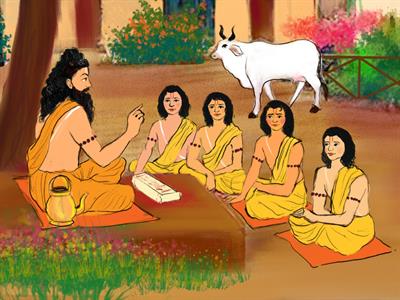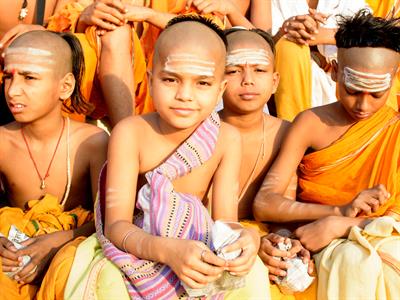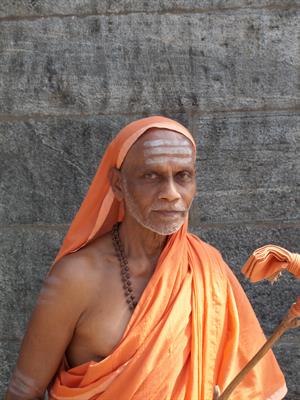
PUMPA - SMART LEARNING
எங்கள் ஆசிரியர்களுடன் 1-ஆன்-1 ஆலோசனை நேரத்தைப் பெறுங்கள். டாப்பர் ஆவதற்கு நாங்கள் பயிற்சி அளிப்போம்
Book Free DemoThe Religious Aspect of Vedic People
- The people of the Vedic age followed religious practices that are interconnected with nature. Most of the Vedic gods were one or the other form of natural forces.
- Reciting hymns from the ancient texts like Rig Veda was one of the common methods of worship followed by the Vedic people. They Worshipped forces of nature at the same time idol worship and temples were not prevalent.
- Rituals and ceremonial sacrifices were performed for the wellness of Praja (Children), Dhana (wealth) and Pasu (Cow/ cattle).
LORD INDRA: He has been mentioned for the most number of times in Rig Veda (250 times), he was also known by the name “Purandhar – breaker of Forts”.
- There were some women gods which were worshipped among the male deities, namely “Aditi (Mother of Gods/eternity), Aranyani (goddess of Forest) and Usha (the goddess of Dawn)”.
The Vedic age also witnessed the presence of important priests like “Vashista Maharishi and Viswamithra”.

- The later part of the Vedic period also witnessed the worship of other gods like Prajapati (the supreme creator), Vishnu (the protector) and Rudhra (the destroyer) while the early Vedic gods like Indra and Varuna slowly lost their significance.
Guru Kula / Vedic education
- One of the significant aspects of the Vedic age was its Education method which was unique according to various historians. The system of Vedic education was known as “Gurukula” whereby the process of acquiring knowledge was through Oral teachings.
- The student life will begin with the “Upanayana ceremony – sacred thread wearing ceremony” and the student will be hence called the “Brahmachari”.
- The Sanskrit term Gurukula indicates “Guru –teacher, kula – family/home”, staying with the teacher.
DVIJAS: These are people who indulge in sacred thread wearing ceremonies two times, so they were also known as “Twice born”. These people were eligible for the Gurukula education.
- The Gurukula education system was first given to the Brahmanas, during later periods it was opened to the Kshatriyas and Vysyas while the Shudras and women were prohibited from this education.

The Gurukula System
- Inculcation of Righteousness and Discipline was the ultimate objective of this method of Education.
- The Gurukula method contains the Oral transmission of Knowledge from the Master to the Protégé, which involves various subjects like Vedas, Puranas, Ethics, Maths, Astrology, Philosophy and military aspects.
The Ashrama System
- The life of an individual during the Vedic age was segregated into four stages according to his age known as the Ashrama system. The stages of the system are,

Brahmacharya

Sanyasa
- Brahmacharya: the life of a student under the Guru in Gurukula.
- Grihastha: the life of married persons.
- Vanaprastha: Gradually detaching oneself from the material world and travelling to holy places.
- Sanyasa: Completely renouncing the worldly attachments and living the life of Sage till death.
Reference:
The Gurukula System - Young Moves Media / Shutterstock.com
Brahmacharya - Kakoli Dey / Shutterstock.com
Sanyasa - Nila Newsom / Shutterstock.com